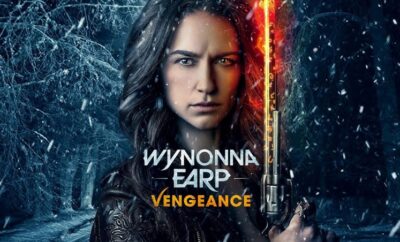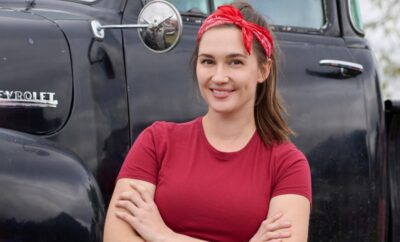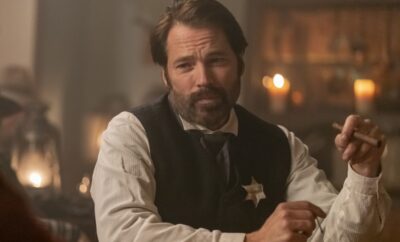Features
Why ClexaCon Mattered
By: Kathryn Trammell
It began with a single moment: a door opening, a bullet firing and a character gone from the annuls of the 2016 TV winter season forever. Lexa wasn’t the first to die and she certainly wasn’t the last, but her death did mark a new crescendo of awareness for a trope that has claimed the fictional lives of 175 queer female characters on TV to date, thirty of whom were killed in 2016 alone. “The 100’s” Lexa was the sixth to die last year and due largely to the queer community’s baited investment in her story and romance with character Clarke Griffin, her death was one of the most deeply felt within the LGBT community. It was also among the most widely discussed outside of the community due to the very vocal backlash it prompted from its baited audience. The message of the backlash? Kill the characters you bait us into watching and we will take our viewership elsewhere.
This message, which has powerful ramifications for the TV shows that compete to build and retain core audiences, carried over into reality and activism. Not only did “The 100” premiere their fourth season to an audience roughly two thirds that of its Season Three premiere (35.6% decrease between the Season Three and Season Four premieres), their jilted audience turned their anger into action by raising awareness and funds for the Trevor Project – $168,000 to be exact.
Their activism did not end there. With the words “our fight is not over” pushing them onward, the movement that had formed in the wake of her death snowballed into something far greater than her character alone. Bigger than her were issues surrounding every aspect of queer representation in media and as a means of providing a space to discuss these issues, a convention was organized in Lexa’s name on the anniversary of her death. Set in Las Vegas, ClexaCon (“Clexa” is the portmanteau of character’s Clarke and Lexa) sought to nurture and lift up the voices behind the movement and it…was..groundbreaking.
Imagine. For three days – THREE DAYS – people came together to celebrate queer female characters in entertainment and the creators and actresses responsible for their existence. More than that, they came together to celebrate the few queer women within the industry who have fought and continue to fight to be represented through the stories they produce, create and portray. This was not only represented in the convention’s panels, but in interviews as well. “It’s cool to see people finally standing up and saying we deserve more – we deserve to see heroes that reflect our stories,” said Natasha Negovanlis (Carmilla, Almost Adults) whose words reflected popular sentiments expressed by both fandom and industry during the event. It was this collective demand for representation that quickly blurred the lines between those onstage and those in the audience who all wanted the same thing: better representation. Queer women not only want to see their relationships accurately portrayed on TV and in film, but actresses and content creators want more opportunities to portray them.
This was most clear anytime actresses were asked about the struggles they faced when considering roles that portray “the typical woman.” For them, the most consistent issue lies within the way female characters are described during casting calls, which are oftentimes solely about their physical appearance. More specifically, these descriptions usually include the words “beautiful, but doesn’t know it.” I cannot honestly remember who among the actresses said these exact words because so many of them did, but I do remember the last time I heard it. I remember because by the time Jasika Nicole said these words in the LGBTQ Actresses in Film panel, most of the audience had heard them repeated as well, and we all laughed at the absurdity of it. That so many actresses, none of whom shared the same panels, had each separately mentioned this exact issue proves just how desperately they too want and need better representation.
And this need for representation is further proof of ClexaCon’s importance. This convention began because so many of us demanded better representation and, due to the academic and serious nature of the topics being discussed, many attendees were finally filled with the assurance that their voices were being heard. This was especially true of the subcultures within the queer community represented at ClexaCon. Contrary to the way it is oftentimes depicted, queer female culture is not limited to only representing white cis-gendered women who identify as lesbian and ClexaCon sought to acknowledge this. They identified a need to investigate and discuss the representation of queer women of color, of bisexuality, of transgender people, of the visibility of asexuality, of a great many things that we as a community are rarely given the room to discuss at cons, let alone in separate panels. By giving subcultures within a larger culture respect and room to speak, ClexaCon did what so many others failed to do: it attempted to become truly inclusive.
Like the celebrity panels, panels like the latter were packed full of attendees wanting to learn more about the issues each subculture faced. Among the issues discussed was a need to better promote inclusivity. For writers like Valerie Complex (BlackGirlNerds) inclusivity begins with proper outreach. When people reach out and invest their time in ensuring all groups are adequately represented and celebrated at cons “you help to draw attention to the niche groups” that are often not included in much of the discussion. This was most evident when the discussion that occurred in the Queer Women of Color Representation in Media panel became so great that it had to be extended into later time slot in order to adequately keep the conversation it evoked going – yet more evidence to the level of desire EVERYONE within the community has when it comes to being heard and represented.
Our demand for representation was justified when over the course of a few panels “Wynonna Earp” writer and producer Emily Andras repeated to her audiences, “Now is the time to write your diverse stories.” She spoke truthfully and her audience felt it – knew it. And just as her words gave her audience hope, so too did the words of many other writers and producers like Aasha Davis, who insisted their projects were born from a desire to accurately portray and represent the women and relationships in their lives. It was a lesson to us all that if at times we feel like we are shouting into a vacuum, we must be sure to make our voices and demands loud enough to shut that vacuum down.





You must be logged in to post a comment Login